Common Asbestos-containing Products
Historically, asbestos is known to have been employed as a component in anything up to 5,000 different products, some of which are still readily available in various parts of the world. The asbestos content in manufactured goods can range from as little as 0.1% right up to 100%. The following list shows a number of the more common asbestos-containing products and typical locations where they may be found in domestic and commercial premises in the UK. The list is in no way exhaustive, however it hopefully will provide some insight into the spectrum of uses that asbestos has been put to.
Asbestos Cement Products
 |
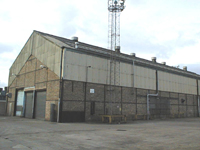 |
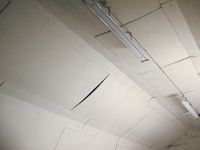 |
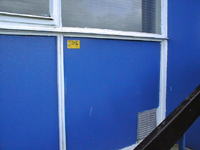 |
Roof sheets – usually corrugated or otherwise profiled for added strength. |
Wall cladding sheets – usually corrugated or otherwise profiled for added strength. |
Flat sheets – often used to line the interior of buildings or be employed as partition wall panels or ceiling panels. |
External wall panels (spandrel panels) – often with a colour impregnated gloss finish |
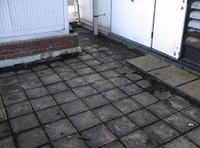 |
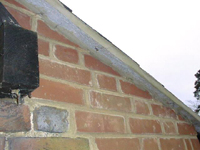 |
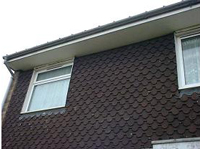 |
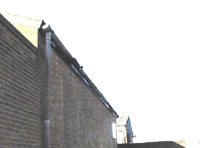 |
Promenade tiles – commonly with an embossed surface |
Under cloak at the gable ends of buildings. |
Soffit boards - often with a white impregnated smooth gloss finish |
Rainwater downpipes and guttering |
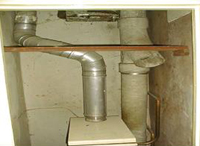 |
 |
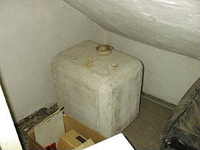 |
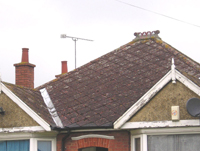 |
Flue pipe |
Boiler flue cowl |
Domestic water tank |
‘Pink’ cement roof tiles |
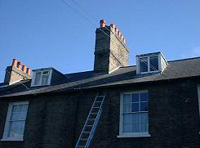 |
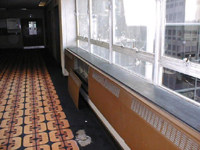 |
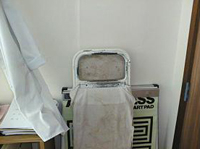 |
|
‘Artificial’ slate roof tiles |
Ebonite – an asbestos cement based product with a smooth gloss finish to simulate slate. Most commonly used as window sill material. |
The ‘old favourite’ – ironing board hot-stand |
Asbestos Insulating Board (AIB) Products
Asbestos Insulating Board (often referred to as AIB or Asbestolux) was developed in the early 1950s to provide a rigid, low density, low cost fire resistant insulating material. It is predominantly found in commercial premises, public buildings, schools, hotels, and system-built council housing. Typical uses include stairway walling, curtain walling, ceiling tiles and panels, partitions and linings to plant rooms/areas. Other common uses are fire proof panels, such as heating ducts, linings to doors and meter cupboards, verge boards to suspended ceilings and core material to fire doors. Due to the ease of working with this product, it was often employed as a general purpose construction board.
Asbestos Insulating Board typically contains 16 -40% asbestos fibre. The most common form of AIB in the UK is a formulation containing Amosite (brown asbestos) mixed with hydrated Portland cement or calcium silicate. It is not unusual to find a small amount of Chrysotile (white asbestos) mixed in with the Amosite. Occasionally AIB can be found that is exclusively Chrysotile and, even more rarely, the material may be encountered where Crocidolite (blue asbestos) is the major, or sole, asbestos constituent.
 |
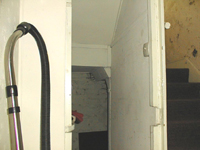 |
 |
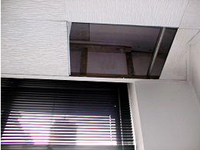 |
Ceiling boards and boxing to steelwork |
Wall boards to basement stair access |
Boxing to pipe work (floor level) |
Verge boards to perimeter of suspended ceiling |
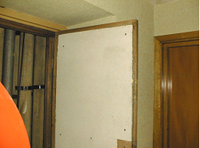 |
 |
 |
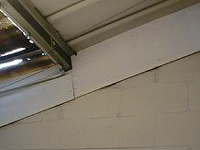 |
Panel on rear of riser cupboard door |
Undercloak at the gable ends of buildings. |
Skylight upstands |
Firebreak panels in roof space (may also be present in void space above any suspended ceiling) |
 |
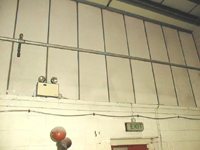 |
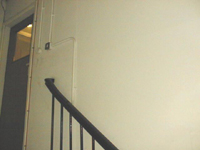 |
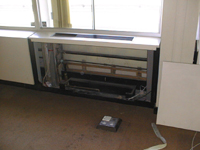 |
Fireplace blanking/mounting panel |
Internal wall boards in factory/warehouse area – (may also be present as roof lining boards) |
General partition wall boarding |
Panel on wall behind heating pipework |
 |
 |
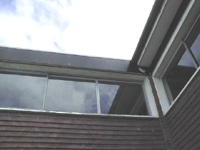 |
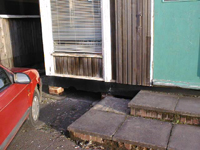 |
Panel on rear of radiator cover |
Soffit to an entrance porch |
External soffit beneath eaves |
Ground level perimeter boarding |
 |
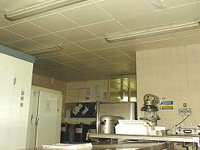 |
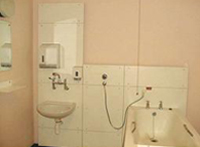 |
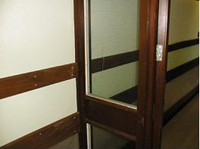 |
External façade (spandrel) panels |
Ceiling tiles (2ft x 2ft with bevelled edges – sometimes found with decorative perforations) Virtually identical tiles were manufactured in plaster and are still manufactured in Supalux material. Always check before disturbing this type of tile. |
AIB panels on rear of all Melamine covers to service void behind this wall |
Edging strip around glazing in fire door |
Textured Coatings
Textured coatings come in a variety of forms and were designed for differing purposes. The most recognised of these is ‘Artex’ type ceiling coatings that, up to the early 1980’s, may have contained between 2% & 4% Chrysotile (white asbestos). The purpose of this material was not only to provide a visually attractive finish but also to provide a means of concealing cracks and blemishes on the coated surface. Other forms of textured coating were specifically designed to provide hard wearing decorative surfaces in heavily trafficked areas of public and other buildings 9e.g. stairwells and corridors). Such products often have an asbestos content of 0.2% or less.
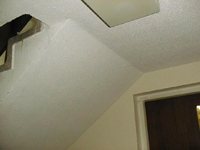 |
‘Artex’ type textured coating (stipple finish) to the ceiling and underside of stairs |
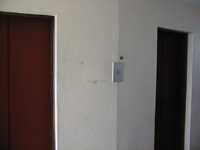 |
Hard-wearing textured wall coating in a stairwell – close inspection reveals a strong ‘orange peel’ finish to the decorative finish |
Textiles, ropes and yarns
Woven asbestos products remain relatively commonplace. Generally they are made of 100% Chrysotile (white asbestos) although mixed fibre types do exist. Very unusually one may come across woven Amosite (brown asbestos) or Crocidolite (blue asbestos) although these are rare.
The most common use of this type of material is as webbing ‘flashguards’ in fuse boxes and rope seals to fuse cabinet doors. Often, asbestos rope may be found as a packing material to pipe transit points, as seals to skylights and other glazing panels and as wrapping to generator exhaust systems. Other uses include fire blankets, fire curtains in cinemas and theatres and as clothing, such as gauntlets, in metal foundries, welding shops and the like.
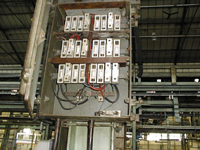 |
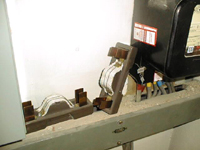 |
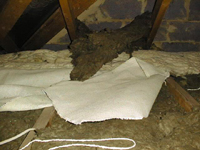 |
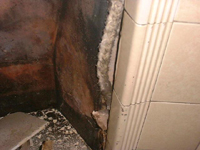 |
Chrysotile webbing flashguards in fuse box |
Chrysotile webbing flashguard on fuse holder |
Collapsed asbestos cloth fire curtain in a roof void. |
Example of Amosite (100%) rope expansion jointing in 1940’s domestic fireback. |
 |
 |
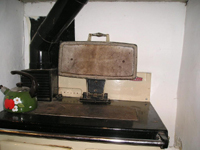 |
|
Chrysotile webbing wrap on a generator exhaust |
Asbestos fire blankets containers may still be found in older commercial premises |
Asbestos (Chrysotile) rope seal on older domestic Rayburn range cooker |
|
